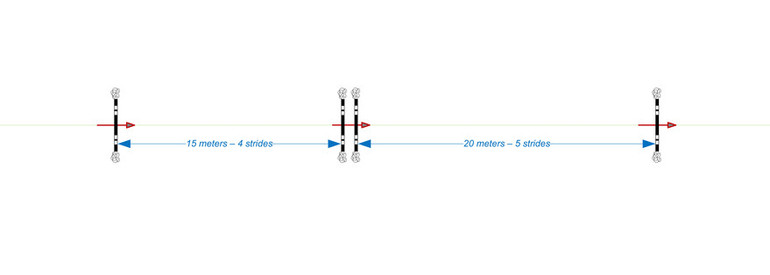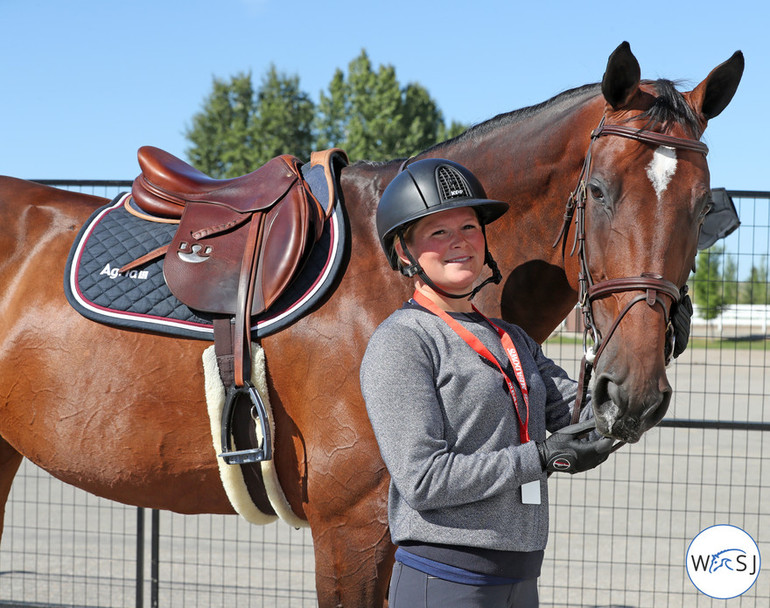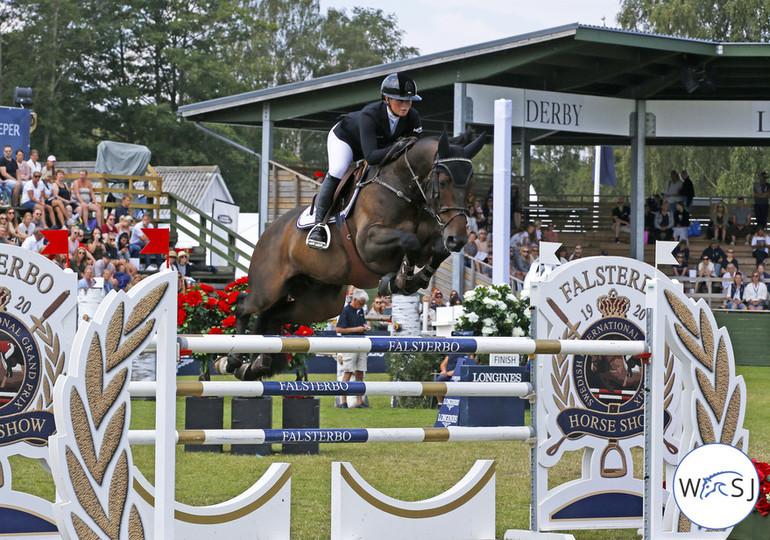Text © World of Showjumping
For the last six years, Stephanie Holmén has worked for Lisen and Peder Fredricson’s Grevlunda Stables in the south of Sweden where she has educated numerous young horses for top level sport. When working with youngsters on a daily basis, Steffi emphasises the importance of a proper education, motivation and also variation.
The young horses that arrive at Grevlunda are normally five years or older, which means that their first years of education have been done by someone else. “When we get the horses they are already jumping, and then it is up to us to continue their education. Here in Sweden, most start to sit on the horses and get them used to a rider when they are 2,5 years old. Then they can be turned out in the field again and the work continues when they are three. That seems to work really well,” Steffi tells.
“When I start to ride the horses, I aim to teach them all the basics that are necessary for them to know for the future. To detail, I want the five-year olds to do transitions in all paces and then when they get older I can ask for further collection to get them more over their hind legs. They also need to get used to move sideways for my leg: It’s not like they have to do a perfect leg yield, but I want them to know what it means. We teach them how to back up and to do flying changes. Of course, you always have to work a bit different depending on each horse and their character. Some horses learn new things in two days and some need two months,” Steffi explains. “However, it is really good to introduce the young horses to all the things that they need to know in the future. The older they get the more quality you can ask for in the different exercises.”
“As an overall guideline, the horses need to enjoy the work we’re doing with them, so I think it is really important to work on their willingness to move forward – to keep them motivated and interested,” Steffi tells.
At Grevlunda, they also emphasise variation in the work the horses are doing and make sure that it is done in different environments. A lot of the time, work is done in the forest. “With the young horses it is even more important to ride in the hills and let them canter outside to build up their physics,” Steffi says.
Stephanie also takes her time to learn the young horses proper lunging. “We often get horses in that can’t be lunged. Many avoid it because they think it is boring to lung, others because they are of the opinion it tears on the horses. Here at Grevlunda however, we are used to Peder working the horses a lot from the ground – and I think it is a very good addition to riding. I really enjoy lunging, as a rider it is good to see the horse from the ground and I think they all need a break from always have a rider on their backs.”
When it comes to jumping the young horses, the Grevlunda-philosophy is the same as for the flatwork – to give the horses as much knowledge as possible to carry with them into their future careers. “To start with, they have to learn how to jump courses as that is what they will do at the shows,” Steffi says. “We start with courses that are built for the level the horses are at. We are very accurate with keeping the horses in balance ahead of the fence, that they jump straight and land in balance. It is also important that we can ride the turns we want to without the horses doing any shortcuts, and that we can keep the horses on a line between our legs. We make sure we don’t make it too complicated so that we instead can take our time to teach the horses in a clear and fair way.”
TRAINING TIP FROM STEPHANIE
This exercise is good for horses in all age groups, but especially for young horses when you want to teach them how to jump several fences on a line with balance and rhythm.
Start off with a small vertical, then measure 15 meters to an oxer and then 20 meters to another small vertical. Build the oxer small to begin with, and then you can make it successively higher.
 Illustration © Peter Lundström/[email protected].
Illustration © Peter Lundström/[email protected].
From the first small vertical you will have four strides to the oxer. After the oxer you will have five strides to the last small vertical. The objective of the exercise is for the horses to learn how to find their balance on a straight line after jumping the oxer and accept to wait to get ready to jump the last small vertical.
For the young horses, we chose to build for five strides after the oxer – to give them a bit more time to find their balance. With the older horses you can have the same distance after the oxer as in front, and then train on getting equal strides.
No reproduction without permission, copyright © World of Showjumping










